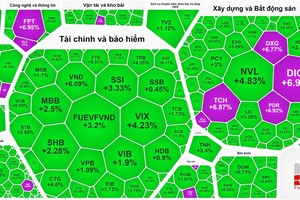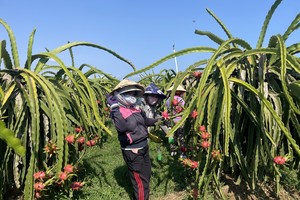Vietnam’s textile and garment firms have faced a severe shortage of materials because the global cotton market has been hit by a shortage crisis, and price hikes.

The global price of cotton has soared continuously since early this year, with an increase of US$1.9-2 per kilogram in May and June. The figure was a rise of 40 percent over the previous month.
The current price hits a record high of over US$4 per kilogram, an increase of 100 percent, and highest in the past 140 years.
The price hike has been attributed to a sharp drop in cotton yield in the world’s giant exporters of US and China due to a prolonged drought.
The US, which is the biggest cotton producer in the world, hasn’t had enough cotton for domestic production.
China, which is the biggest consumer of cotton in the world, had to import about 800,000 tons of cotton, due to a bad harvest in the 2009-2010 crops.
India, the world’s second biggest exporter, announced it would stop exporting cotton to ensure adequate supply for local production. This has had a bad impact on the world market.
Global economists said material shortages faced by producing countries have pushed up the price.
Though the price has surged sharply, the world still has had high demand for cotton.
The price was forecast to be on the rise. Therefore, countries whose production materials are mostly imported, including Vietnam, will face many difficulties in purchase of materials and production during the next few months.
Vietnam has planned to expand its cotton farms as its current produce can meet only two percent, equal to 10,000 tons, of the local demand. The country has to import the remaining 98 percent of the demanded volume.
In addition, 80 percent of other materials used to make clothes need to be also imported.
Therefore, the cotton price hike doesn’t only impact the textile sector but also the clothing sector.
When the price climbed by 40 percent in the middle of this year, most of Vietnamese textile producers had sold out their products.
To fulfill next orders which were contracted they have had to struggle with the price hike and shortage of cotton.
They didn’t stockpile cotton because they were not informed of the situation of the world market.
Many textile producers have had to halt production due to the lack of cotton and price hike.
The cotton price hike has caused a rise in the cotton fabric price, leading to a hike in the clothing price.
Nguyen Huu Toan, director of Sanding Fashion Company, said 80 percent of the company’s clothes are made of cotton fabric, whose prices have gone up by over 50 percent compared to the last month.
Therefore, Sanding clothes are priced higher, about 50 percent at the minimum, he added.
To maintain production, many apparel makers have switch to making clothes of low-price fabric like polyester. However, their needs have boosted the price of polyester fabric by 20 percent.
























